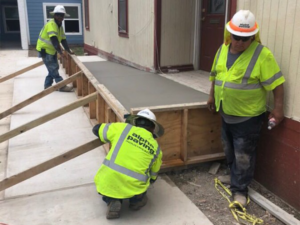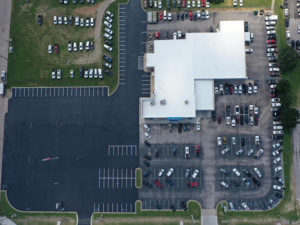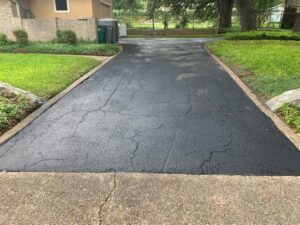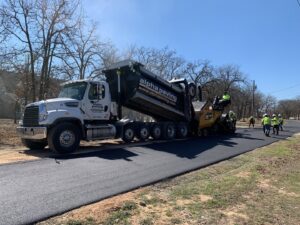 Concrete has been around far longer than many people realize. The earliest known use of concrete was in parts of Jordan and Syria around 6500 B.C. Builders in those areas used concrete to create underground cisterns, floors, and housing structures. More than 3,500 years later, the Chinese and Egyptians also made use of concrete. The Romans developed a concrete mix that bears a strong resemblance to the mixes used today. By about 200 B.C., the Romans used concrete for many of their construction projects, including the famous Colosseum in Rome. The first street in America to feature concrete paving was built in 1891 and is still in existence. Today, builders use concrete to construct dams, highways, bridges, parking lots, sidewalks, skyscrapers, and many other structures.
Concrete has been around far longer than many people realize. The earliest known use of concrete was in parts of Jordan and Syria around 6500 B.C. Builders in those areas used concrete to create underground cisterns, floors, and housing structures. More than 3,500 years later, the Chinese and Egyptians also made use of concrete. The Romans developed a concrete mix that bears a strong resemblance to the mixes used today. By about 200 B.C., the Romans used concrete for many of their construction projects, including the famous Colosseum in Rome. The first street in America to feature concrete paving was built in 1891 and is still in existence. Today, builders use concrete to construct dams, highways, bridges, parking lots, sidewalks, skyscrapers, and many other structures.
What Is Concrete Flatwork?
Is All Concrete Construction Flatwork?
Because concrete is fluid when a concrete installer pours it, it can be molded to create vertical structures. Dams, pillars, columns, walls, and other vertical structures are not flatwork. Essentially, flatwork covers concrete work that lies on a horizontal plane. Therefore, it includes sidewalks, parking lots, streets, foundations, patios, driveways, foundations, dumpster pads, and other flat surfaces. In some instances, flatwork can also include loading docks and ramps.
What Are Some Advantages of Concrete Pavements?
You can find many concrete Austin TX streets, sidewalks, dumpster pads, and parking lots, but concrete is also very common in residential construction. Many modern homes feature concrete slab foundations, driveways, garage floors, and patios. A high-quality concrete mix that a reputable Austin company installs correctly will be extremely strong and have a long life. Concrete flatwork can have surface patterns, and stains are available to change the concrete’s color for enhanced aesthetic appeal. Therefore, if you want to create a walkway that mimics the appearance brick, your concrete installer can provide it. In most cases, concrete flatwork that the installer stamps to mimic pavers, flagstone, or bricks will be more economical than using the individual pieces. Furthermore, pavers and bricks often experience uneven settling, potentially giving you numerous components that can pose tripping hazards.
Is Concrete Repair Expensive?
Like other paving materials, the cost to repair concrete depends on the damage’s type and extent. For example, it is much more economical to fix a small crack than to rip out a dumpster pad, rebuild the subbase, and pour new concrete.
Is Rebar Always Necessary for a Concrete Pavement?
Many types of concrete pavements may not need rebar. The primary considerations are the underlying soil and the load that the pavement must support. For example, a concrete sidewalk may not need rebar, but a dumpster pad will almost always need extra support.
Does Alpha Paving Offer Concrete Repair and Installation?
Yes, we are a full-service Austin paving company, but also install and repair concrete. Our services include asphalt repairs, milling, overlays, paving, and sealcoating. We also offer parking lot maintenance services, including striping and marking, signage, speed bumps, and wheel stops. Many of our jobs require our expertise in both asphalt and concrete installation; we may need to sealcoat an asphalt parking lot, for example, and replace the adjacent concrete curbs or rebuild the dumpster pad. Our team members are experienced, highly skilled paving professionals who can handle even the most complex project. We serve municipalities and counties, retail establishments, healthcare facilities, apartment complexes, industrial facilities, airports, churches, schools and universities, hotels, and many other commercial clients in many Central Texas locations. You can submit the online form or call 512-677-9001 to request a free quote.






